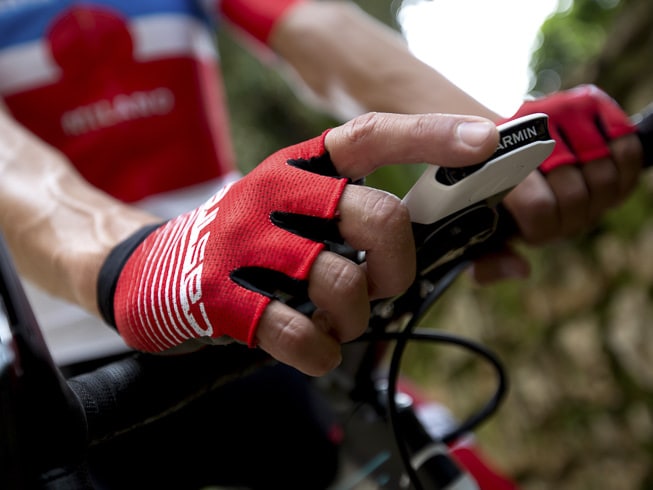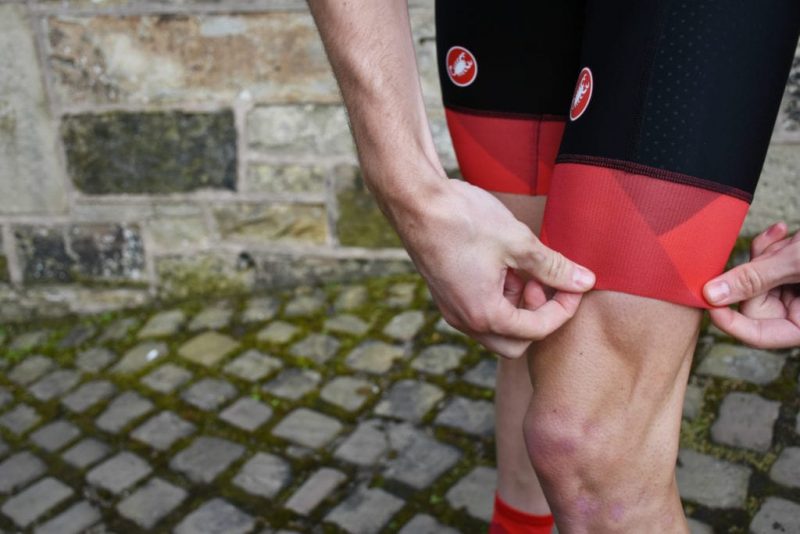Castelli Climbers Jersey Review
You’ve probably heard of Castelli, and may already recognize the scorpion that embodies their logo. They’ve been making clothing for the pro peloton since 1910, beginning with the World Champion and five-time Giro winner, Alfred Binda.
Their reputation is built on experience designing cycling clothing that is innovative, technical, and stylish, and the Climber’s 3.0 is no exception. The iconic Italian brand is the choice of many cyclists, and for good reason.
Team Garmin-Sharp wore the first Climber’s Jersey back in 2012. Riders quickly embraced it for its exceptional heat management and aerodynamic properties. In 2014, the Tour of Dubai adopted it for their leaders’ jerseys to tame the blistering heat.
Continued improvements to the model translated into version 2.0 in 2015, and the 3.0 was developed with Team Ineos (formerly Team Sky) for the 2019 season.
The Castelli Climbers 3.0 jersey falls under the high-end to the premium price point for short-sleeved jerseys. You’re paying for a quality product and materials, and it’s a solid value.
You won’t regret it.
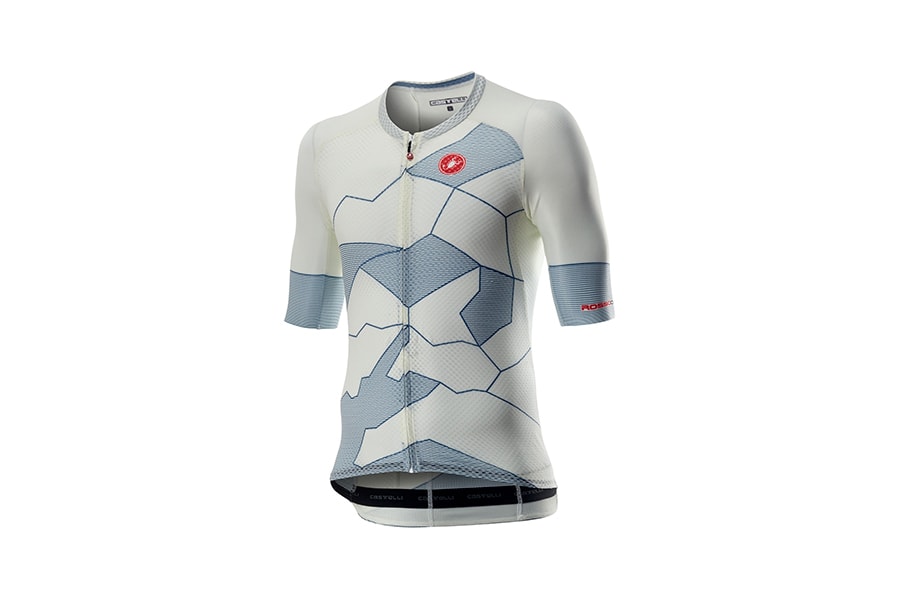
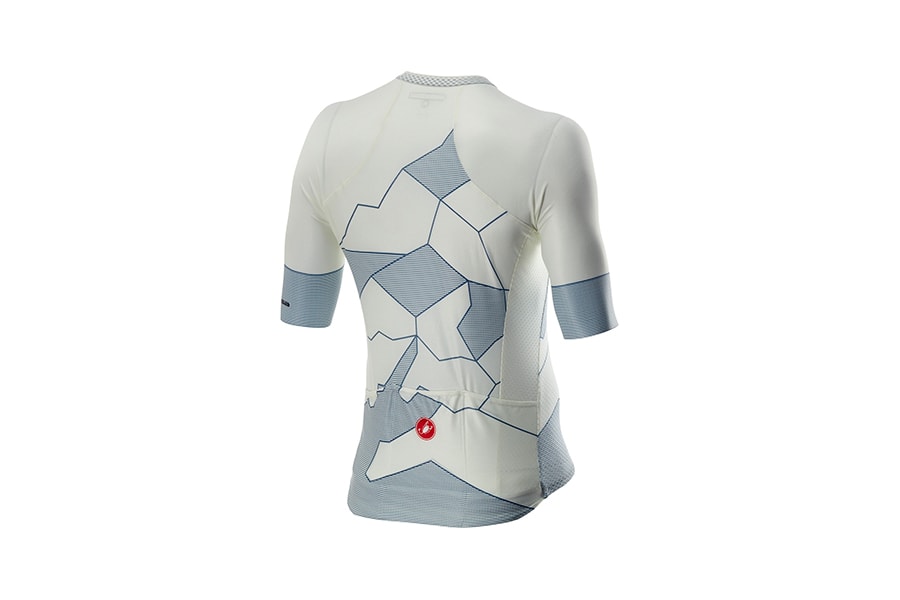
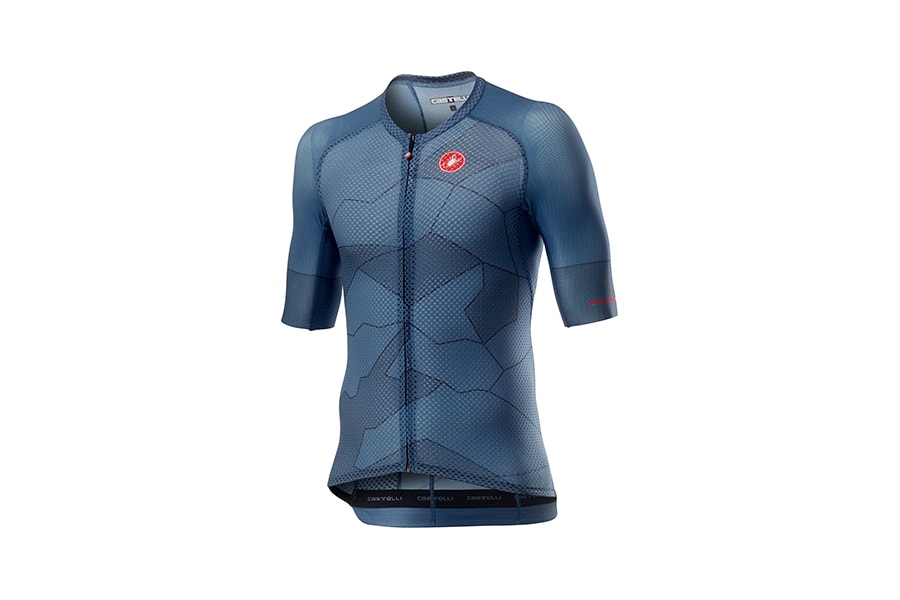
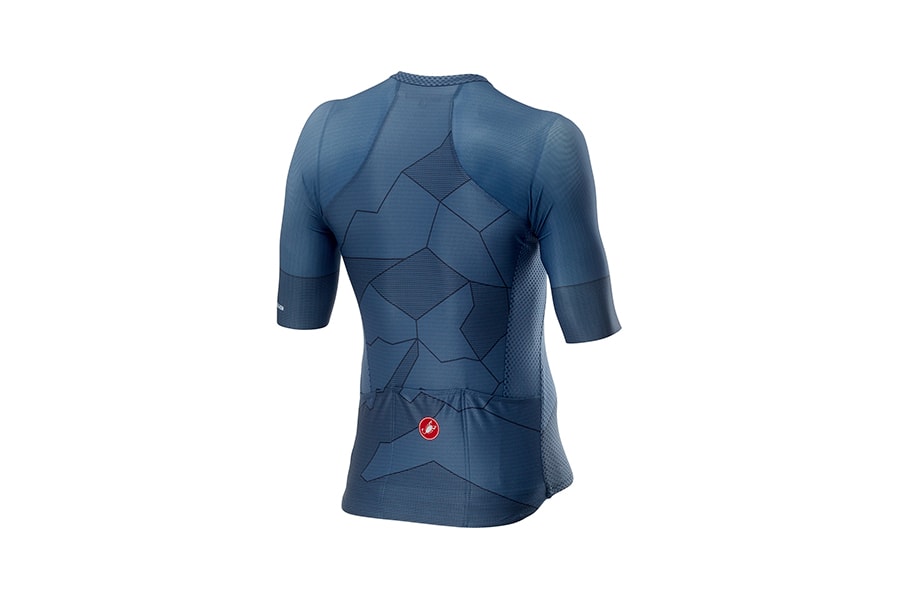
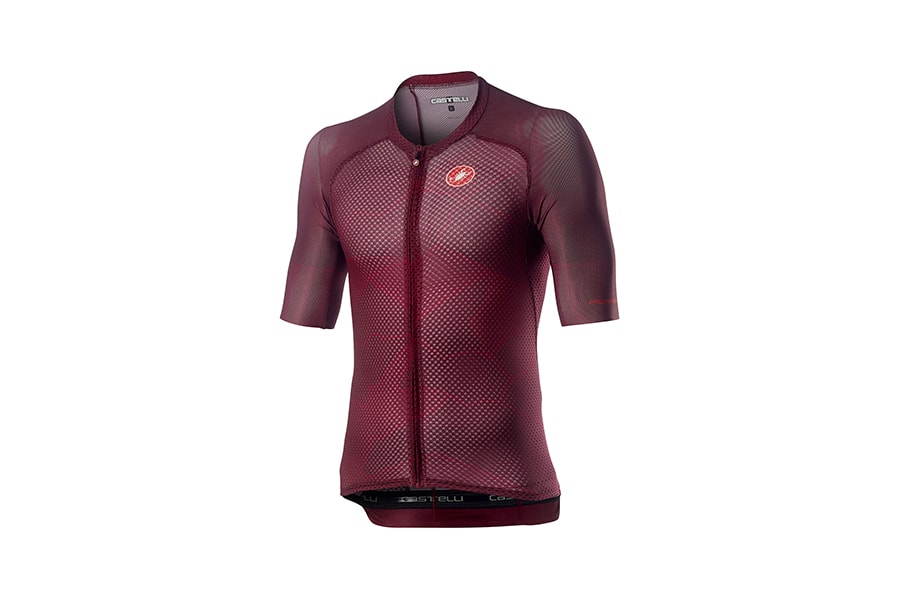
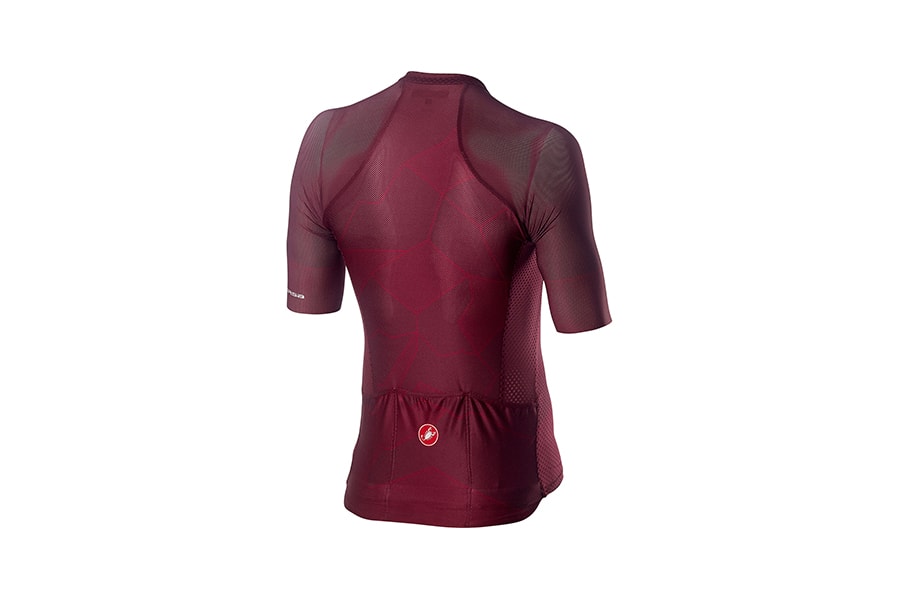
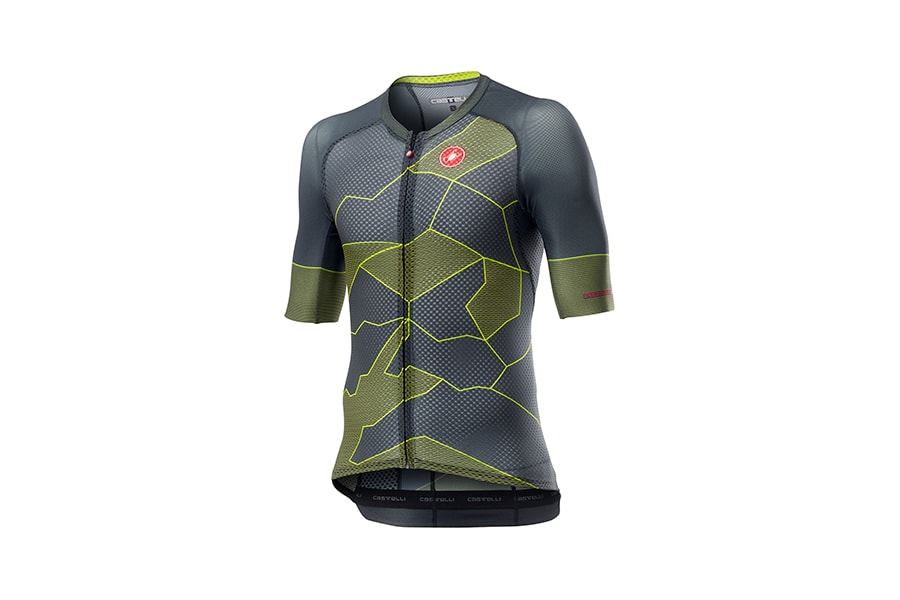
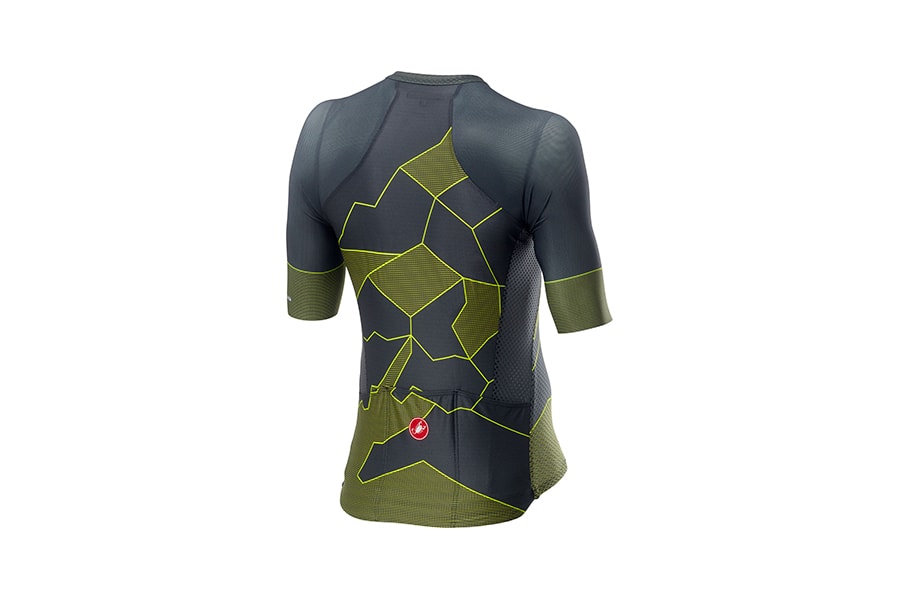
Technical Specifications
- Sizing : XS to XXXL (Chests from 36 – 45”/ 88 – 115 cm in circumference)
- Colors : Available in four colors (Dark Gray/Yellow Fluo, Light Steel Blue, Ivory Light Steel Blue, Sangria)
- Weight : 116g (In Size L)
Who is it For?
The Castelli Climber’s 3.0 Jersey is for cyclists looking to effectively manage heat when putting in a ton of elevation in intense temperatures. Its impressive technical characteristics also make it an ideal choice for riders that sweat a lot or want a similar reprieve during intense indoor workouts.
The mesh-like fabric on the jersey’s back panel creates impressive airflow when pushing your limits in the heat and protects your skin from the sun’s harmful UV rays; 90% worth, in fact.
It’s versatile enough to wear from late spring through to the Indian summer days of fall. Lightweight and agreeable to wear, it could even serve as a base layer under a jacket or long-sleeved jersey as temps cool.
Regardless of your preferred use, you’ll applaud its comfort, handsome looks, aerodynamic fit, and high-tech fabrics. Since it evaporates perspiration like a pro, you’ll be fresh and dry when the mercury is peaking.
Our Opinion
I heard many good things about this jersey.
Versions 1.0 and 2.0 passed me by, so I didn’t want to make the same mistake for the 3.0. I had to find out for myself what all the fuss was about, and I’m glad I did.
Cycling clothes aren’t easy on the wallet. A garment’s quality and technical features need to merit the price tag, be comfortable and stylish too. This jersey was an investment, but a worthy one.
Here’s what I took away from the jersey after a few weeks of use.
Pros
- Lightweight, a mere 116 g in size L.
- Multiple colors. Four sophisticated colors, with an understated, contemporary design.
- High-tech fabrics. Will keep you cool and dry in the scorching temps.
Cons
- Lack of zippered rear pocket for this price point.
- Snug aero-fit. Not suitable for all body types.
Efficient Heat Management Makes The Difference
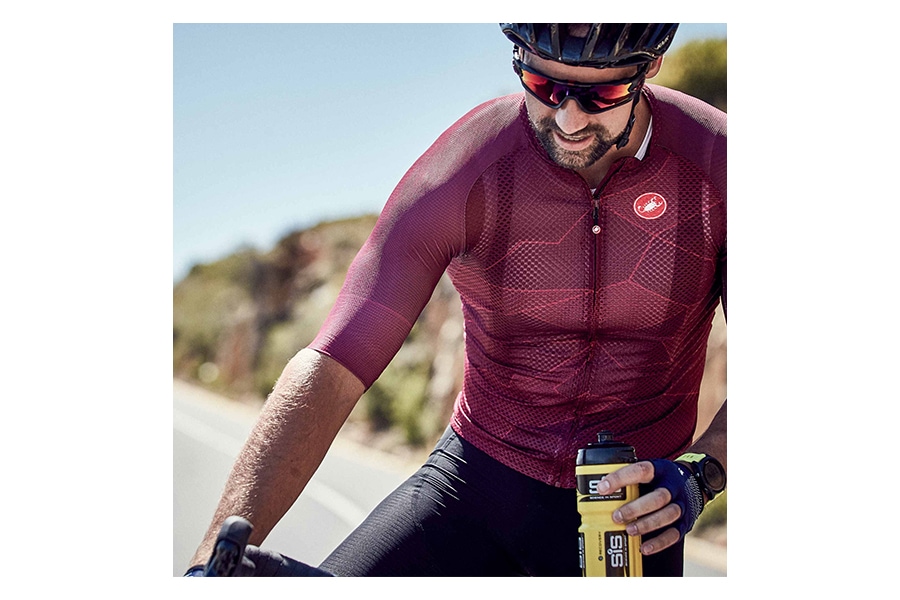
The energy created when cycling gets converted into heat. Our bodies instinctively react by sweating to encourage cooling and to keep internal temps from going into overdrive, especially in scorching weather.
Technical fabrics used in quality cycling clothing allow generated heat to easily pass through and dissipate into the air, similar to the skin’s pores. It’s the heat lost through moisture evaporation that keeps the skin dry and core temperatures at a manageable level.
This is where the Climber’s 3.0 shines.
Castelli’s designers and engineers used a scientific Thermo-Fluid dynamic algorithm to study and optimize its airflow, heat, and moisture transfer values. The jersey gets high marks for efficiency, superbly managing heat evacuation when you need it the most.
Everything from its design, choice of fabrics, panel placement, and seam construction is tested. The result is a garment fit for pros, available to mere mortals.
Strategic Fabric Placement for Improved Fit and Comfort
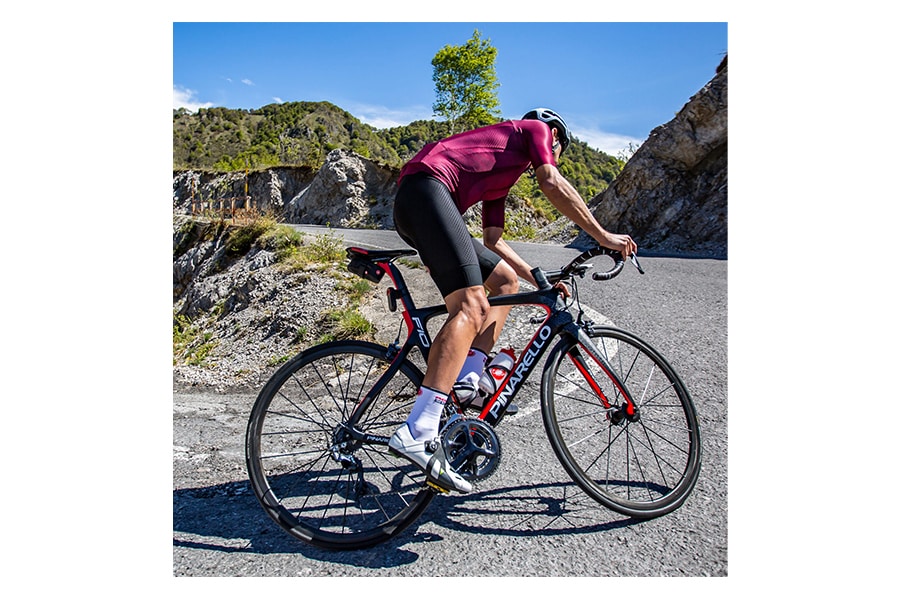
Air flows through the mesh-like Flusso 3D fabric on the front and side panels. Raglan sleeves, cut from a more densely woven and wind-resistant version of the same material, improve fit and aerodynamics. The difference in texture between the zones is unmistakable, yet they work together to carve through wind and regulate heat.
Long hours in the saddle mean exposure to the sun. The jersey’s back panel is made from the highly breathable StradaPro 3D fabric that blocks over 90% of UV waves, preventing a nasty sunburn.
Sleeves that are too tight or pull are a nuisance. The days of restrictive elastic bands to hold them in place are over. Castelli uses a wide strip of non-restrictive and pleasant stretch material to get the comfort level just right.
Great Attention to Detail
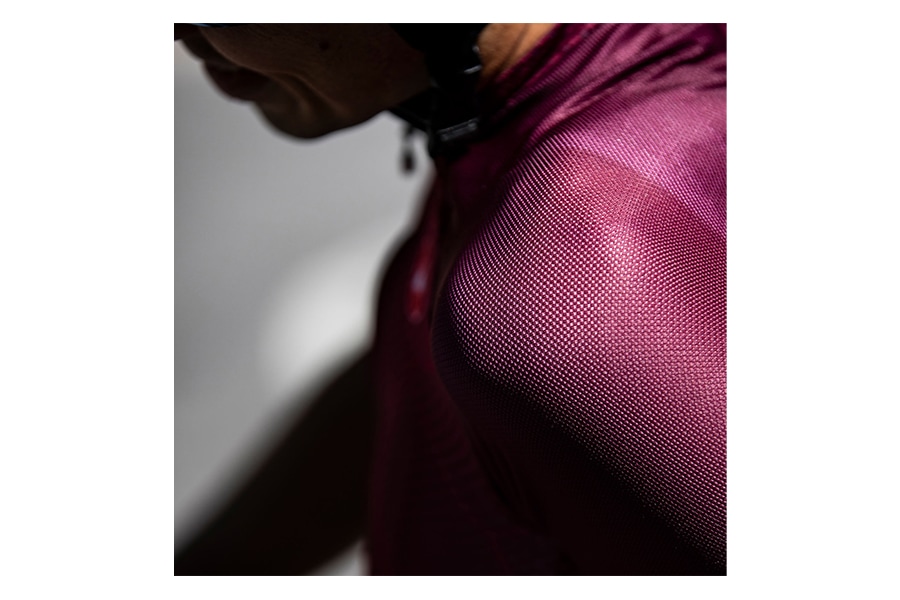
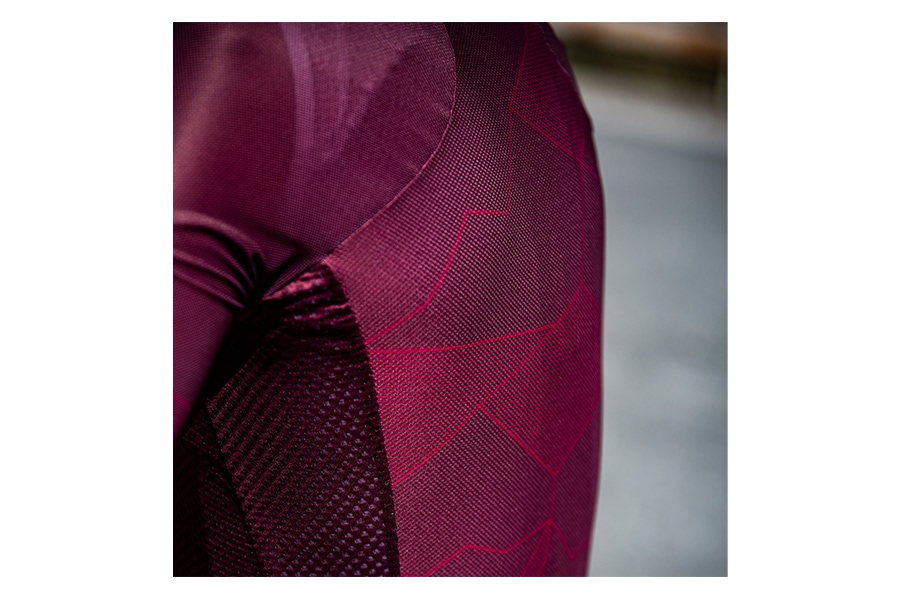
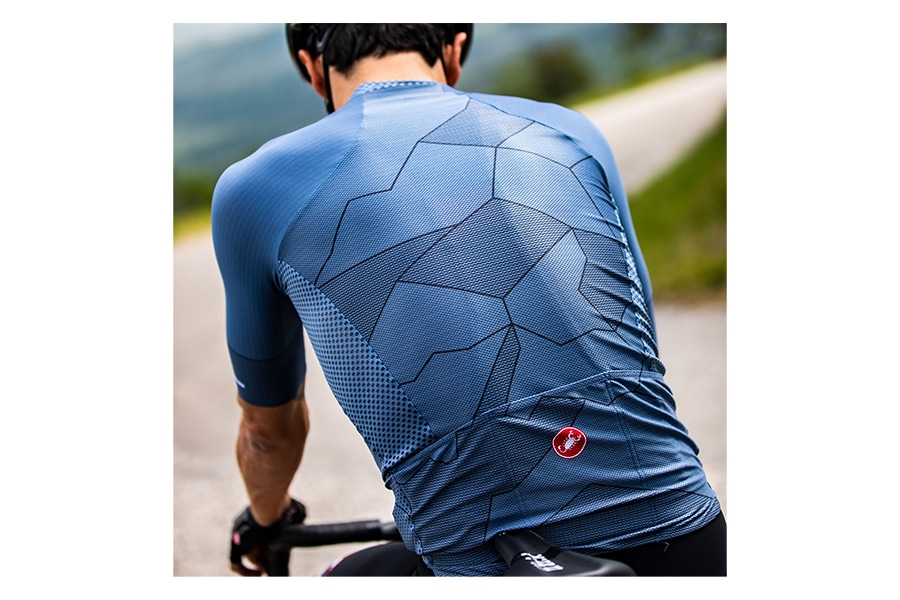
The difference between a less expensive jersey and the Castelli Climber 3.0 lies in the details. Some cyclists have yet to spot quality differences, but once they do and experience it firsthand, there’s no turning back.
Consider how a garment looks and feels overall. Inspect the seams, zippers, and hems and check for any sagging when worn. Lay it on a table, if it remains flat, it wasn’t designed to fit a body well.
Castelli has paid considerable attention to bring the following details to the 3.0 :
- Zipper. Every zipper isn’t the same. Castelli opted for a full-length resin injected YKK® Vislon® zipper. It’s more durable, supple, lighter, and available in many colors to keep you looking sharp.
- Drop tail. The rear of the garment is cut longer than the front, like a tail, to provide adequate coverage where jersey meets shorts in the riding position.
- Easy-to-reach rear pockets hold personal items, food, and clothing during a ride. Being sewn on the drop tail puts them at the perfect height for reaching in and digging around for what you need on the move. The full-length zipper pulls everything securely together at the waist to prevent bulky items from bouncing around through a surprise pothole or when the road is less than smooth.
- Low collar, similar to a standard T-shirt. Its modest size avoids contact with Adam’s apple and prevents the sensation of overheating or chafing around the neck.
The Castelli Climber’s 3.0 Jersey falls under Castelli’s Race Fit category, which is simply an aerodynamic cut well-suited to serious riders. The zipper, drop tail, rear pockets, and low collar are details that make the difference in how it fits, looks feel and performs.
Many cyclists can benefit from this jersey, so don’t let the word Race turn you away if you don’t identify with this category. When purchasing, keep in mind that you may have to go up a size or two to find a fit right for you.
What Others are Saying?
Great in the heat
Great jersey for the hot and humid summer days of New England. The first couple of times I wore it I had to remind myself that I did have a jersey on because it felt like I had forgot my jersey. It’s a snug fit but there’s a big difference between this jersey and my other ones when it comes to the hot days.
Light and comfortable
Great for hot and humid tropical weather as well. Tight-fitting but not restrictive
Tony7841, purchased from Wiggle
Castelli Climbers 3.0 Jersey
Overall
-
Design and Aesthetics
-
Comfort
-
Sizing Accuracy and Fit
-
Weight
-
Durability
Buy This If...
If you’re looking for a lightweight, aerodynamic and good-looking jersey to manage heat in hot weather conditions. Its remarkable airflow and moisture-wicking properties will keep your inner temp down and your cycling performance up.
How Much Does it Cost?
The price and availability of the Climber’s 3.0 vary by region. I spotted many discounts depending upon the retailer, so don’t let it pass you by. The Castelli Climber’s 3.0 jersey retails at :
- US Dollars : $139 (available from Competitive Cyclist)
- British Pounds : £90 (available from Wiggle)
- Australian Dollars : $169 (available from Wiggle)


